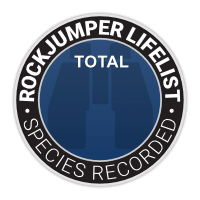Image of the Month July 2018 Cuban Trogon
PREVIOUS PAGE
The confiding “Tocororo”, sporting the colors of its home country flag, is a most appropriate choice for Cuba’s national bird. Inhabiting forest habitat throughout the island, wet and dry, and at all elevations, this stunner is familiar to all Cubans and a favorite of locals and visitors alike. The Cuban name is onomatopoeic, and its rollicking, ventriloquial call is a series of staccato notes, strung together almost to a rattle. The sound is appealing in its rhythmic nature, and surely it is one of the most charismatic and emblematic features of the fabulously friendly island nation’s outdoor experience. Ever watchful, it takes perches within the shaded patches of woodlands, perching upright and alert, at times offering views of its striking shape and plumage right at head height, though it also frequents the upper reaches of the canopy too.
The Cuban Trogon is one of 29 bird species endemic to Cuba, and it is not alone in its smart attire. Perhaps the most famous avian resident is the Bee Hummingbird, which at just 2 and half inches (6 cm), is the world’s smallest bird. Also diminutive in size, though big in birder’s minds, is the impossibly cute and Christmas tree ornament-sized Cuban Tody. The only bird family endemic to the Caribbean apart from the odd and endearing Palmchat of Hispaniola, the Todies are the last relicts of a bird family which was once more widespread. Along with two species in Hispaniola (Dominican Republic/Haiti), one in Jamaica and another in Puerto Rico, there are fossils of extinct species from the American West and Europe.
While the trogon family is rather widespread, with members throughout the Neotropics, tropical Asia and Africa, the Cuban Trogon is but one of two species in the genus Priotelus. The only other member being the Hispaniolan Trogon, seen regularly on our Dominican Republic tours. The word ‘trogon’ is Greek in origin, signifying nibbling or gnawing, perhaps a reference to these birds feeding style as they resolutely munch fruit and insects, but may also reference their excavation habits for nest cavities. Cuban and Hispaniolan Trogons more often use old woodpecker holes for nests, whereas most trogons excavate nest cavities in rotting dead wood, or termite mounds.
The featured Cuban Trogon, or Tocororo if you prefer, the Hispaniolan Trogon, the tiny Bee Hummingbird, and the charismatic todies are but a couple of the many fascinating and colorful characters of the Caribbean. Just a short flight away, avian adventure awaits!
Contact us today, and discover more on these Caribbean birding adventures:
Belize, Guatemala and Honduras – Ultimate 2018
19 Nov – 4 Dec 2018 (16 days)
Price: USD6,250
Dominican Republic – Endemics of Hispaniola IV
04 – 11 Dec 2018 (8 days)
Price: USD2,975
Cuba – Caribbean Endemic Birding VIII
11 – 20 Dec 2018 (10 days)
Price: USD3,250
Dominican Republic – Endemics of Hispaniola I
13 – 21 Jan 2019 (9 days)
Price: USD3,675
Cuba – Caribbean Endemic Birding I (USA Citizens Only)
20 – 29 Jan 2019 (10 days)
Price: USD4,775
Jamaica – Island Endemics Exclusive
30 Jan – 4 Feb 2019 (6 days)
Price: USD2,975
